
Journal of Mining and Earth Sciences, Vol 66, Issue 2 (2025) 29 - 38 29
Research on local cold airflow supply methods in
designing cooling solutions for longwall faces in
underground coal mines
Phuc Quang Le 1, 2, *, Tien Trung Vu 1, 2, Chi Van Dao 1, 2, Cuong Hong Nguyen 1, 2
1 Hanoi University of Mining and Geology, Hanoi, Vietnam
2 Research Group: Sustainable Development of Mining Science, Technology and Environment (SDM), Hanoi
University of Mining and Geology, Hanoi, Vietnam
ARTICLE INFO
ABSTRACT
Article history:
Received 27th Nov. 2024
Revised 04th Mar. 2025
Accepted 19th Mar. 2025
Workers in underground coal mines are always at risk of heat shock due to
high temperatures and narrow spaces. To reduce the temperature in the
longwall faces, some mines have used air conditioners to increase the cooling
capacity, creating a better working environment for miners. However, the
current method has wasted significant cooling capacity for short-distance
tunnels while providing a negligible cooling effect for remote longwall face
areas. To resolve this problem, the cooling solution using cold airflow
distributed at local points has been studied. The essence of this solution is to
direct all cold air from the air conditioner into the air duct and only supply it
to the necessary locations. The cold airflow from the air duct is sprayed into
the main airflow to reduce the temperature locally for each miner's working
position. The cold airflow can be actively adjusted to correspond to the
cooling zone in the tunnel's upper, middle, or lower part and longwall face.
The effect achieved is to reduce cold air loss, increase the air conditioner's life
by installing it in a favorable environment, and directing the cold airflow
through the duct to the necessary place. An experimental study using the
airflow from the air compressor also reduced 1.10C over a local range of 5 m
in the LC-I-9-24B longwall face at the Nam Mau coal mine. This clarifies the
applicability of cold airflow at local points and introduces the direction of
improving the cooling efficiency of air conditioners in underground coal
mines.
Copyright © 2025 Hanoi University of Mining and Geology. All rights reserved.
Keywords:
Air cooling,
Air distribution,
Cooling mode,
Local cooling,
Underground coal mine.
_____________________
*Corresponding author
E - mail: lequangphuc@humg.edu.vn
DOI: 10.46326/JMES.2025.66(2).04

30 Phuc Quang Le et al./Journal of Mining and Earth Sciences 66 (2), 29 - 38
1. Introduction
Energy security is one of the core issues of the
national economy. Among the main energy
sectors, the Vietnamese coal industry is an
important link to maintain and ensure energy for
production development. According to the
planning (Prime Minister, 2023), Vietnam's
underground coal mines are moving towards
deep development, typically at Vang Danh coal
mine, which is developing to a depth below -175
m, Mao Khe coal mine to a depth below -150 m,
and a depth below -300 m at Nga Hai coal mine. In
addition, underground mining activities are also
taking place at deep coal mines such as Ha Long
coal mine (-350 m), and Ha Lam coal mine (-300
m) and shortly will develop to -500 m. Workers at
these depths not only the danger of mine pressure
but also a heightened risk of thermal shock. In
high-temperature environments, miners' health is
seriously threatened affecting labor productivity,
and the production efficiency of enterprises
declines (Gibb et al., 2024; Su et al., 2009).
In Vietnam's underground coal mines, the
main principle for controlling the underground
thermal environment is the distribution of mine
airflow. Controlling the pressure of the airflow in
a continuous homogeneous environment is the
basis of this method (Kamyar et al., 2016; Brodny
and Tutak, 2017). However, in areas far from the
center of the mine (from 3÷5 km), the airflow
cannot reach the longwalls effectively, thus failing
to ensure the cooling effect at the workers'
workplace. Therefore, the current cooling scheme
in underground coal mines needs to be adjusted,
and the air distribution more suitable to meet the
cooling requirements at the workers' workplaces
(Szlązak et al. 2016; Nikolaev et al., 2017). This
approach is ideal for the actual characteristics of
the underground coal mining environment,
providing a more effective and sustainable
cooling solution for mining enterprises.
Currently, underground coal mines in
Vietnam use the traditional cooling mode of fresh
air taken from the atmosphere through fan
stations. The operating mode of the main fan and
the ability to regulate airflow distribution will
determine the efficiency of mining air cooling. In
recent years, some underground coal mines in
Vietnam have installed additional MK-300 air
conditioners in the tunnel to provide cooling for
the longwall faces (Dao et al., 2017; 2019; Nguyen
and Nguyen, 2019). The MK-300 air conditioner is
located at the roadway and then pushes the cold
air along the entire cross-section of the roadway
leading to the longwalls face. According to
temperature control results at the mines, the
cooling capacity of this method is not effective,
specifically: at the mechanized longwall face of the
coal seam 11 in the Ha Lam coal mine, the
temperature only decreased by 1.4÷1.70C, and
this value only reached 1.30C at the longwall face
I-11-3 in Khe Cham I area of Ha Long coal
company. One of the reasons for the ineffective
cooling is the overly wide dispersion range of the
cooling area behind the MK-300 air conditioner.
In many cases, this method has wasted a large
amount of cooling capacity for the short-range
tunnels while providing an insignificant cooling
effect to distant areas. To increase the cooling
capacity, the MK-300 air conditioner is placed
closer to the longwall face. However, this means
that the machine must be placed in a narrow
space, with high dust and humidity. These
conditions are not good for the air conditioner to
work effectively. The machine often has problems
when applied at the Ha Lam and Ha Long coal
mines. To overcome the above disadvantages, a
local cooling mode using cold airflow directed to
the required points of the workers' working
positions has been proposed to reduce the
temperature and meet the workers' need for
thermal comfort. Two main advantages
determine the effectiveness of this solution,
including: (1) providing accurate cold airflow to
each specific working position of the worker
through a closed air duct, reducing cold air loss;
(2) routing cold airflow through the air duct
behind the MK-300 air conditioner allows for the
selection of a location to place the machine in a
spacious area with low humidity and minimal
dust-conditions that favor effective operation and
prolong the machine's lifespan.
According to the proposed cooling mode, the
method uses a local air distribution form based on
segmented points. This method aims to provide
cold air to cool only the working position of the
worker, avoiding waste of cooling capacity in
ineffective cooling zones. In addition, the
efficiency is considered taking into account the

Phuc Quang Le et al./Journal of Mining and Earth Sciences 66 (2), 29 - 38 31
characteristics of the remote underground space,
the long and narrow tunnel, and the presence of
dispersed workers. The interaction between the
cold airflow and the main airflow (main
ventilation) in the tunnel creates the
phenomenon of injecting cold air into the main
flow environment through a nozzle on the air
duct. This nozzle can also be understood as a vent
(Karagozian, 2014; Szlązak et al., 2018). The
interweaving of the two flow fields in the long and
narrow tunnel space will create a complex
structure for the cooling range (Gopalan et al.,
2004; Alabyev et al., 2020). The addition of cold
airflow at points along the length of the tunnel can
be understood as a unified flow pattern within the
main airflow. In previous studies, this solution has
not been considered for application in
underground coal mines in Vietnam. Therefore, it
provides a valuable theoretical basis and ideas for
research, offering a new perspective to optimize
the design of local cooling systems in
underground coal mines.
2. Research Method
Theoretical and empirical analysis methods
are used to clarify the cooling capacity at
designated points. On that basis, a solution to
improve the cooling capacity of the MK-300 air
conditioner for the longwalls far from the mine
center has been formed. The ability to provide
cold airflow to the required points through the air
duct installed behind the MK-300 air conditioner
has been gradually clarified, based on the need for
segmented cooling at each worker's position in
the long, narrow, and distant mine tunnels (Figure
1).
Air distribution to ensure safety and a
suitable microclimate in the workplace is
considered the main objective of controlling the
underground thermal environment. Specifically,
it aims to increase oxygen concentration, reduce
dust concentration, dilute pollutants, and
maintain a hygienic working environment. In the
confined and high-temperature spaces of
underground coal mines, the need for cooling is a
primary concern for miners. The ventilation
network plays an important role in ensuring the
safety of workers' lives and health (Kuyuk et al.,
2020; Li and Fu, 2020). Therefore, all tunnels in
mine must be provided with an appropriate
amount of air to meet this objective. For example,
according to the Vietnam Underground Coal
Mining Safety Regulations (Ministry of Industry
and Trade, 2011), the allowable air velocity range
is specified as 0.25÷4 m/s for longwall faces. This
range is designed to ensure adequate air supply
for a safe working environment. It also confirms
that the design and management of mine
ventilation and air cooling are key to controlling a
safe and efficient underground working
environment.
In practice, cooling measures must be taken
to adjust environmental parameters when the
temperature reaches a specific threshold.
According to the Vietnam Underground Coal
Mining Safety Regulation (Ministry of Industry
and Trade, 2011), operations must stop if the air
temperature in the longwall face exceeds 300C or
340C in the electromechanical equipment
chambers. When the temperature exceeds these
limits, cold airflow must be supplemented by
mechanical cooling methods. In underground
mines, mechanical cooling is often the solution to
Figure 1. Diagram of research steps.

32 Phuc Quang Le et al./Journal of Mining and Earth Sciences 66 (2), 29 - 38
supplement cold air to the existing tunnel
ventilation system. For example, the MK-300 air
conditioning method is applied in the Ha Lam and
Ha Long coal mines. Although the cold airflow has
a low flow rate and can provide local supply to
certain locations, the energy consumption of the
cooling equipment is significant. Therefore,
optimizing cooling solutions is crucial for the
production efficiency of underground mines.
With theoretical analysis results, we have
applied at the LC-I-9-24B longwall face at level
+60/+120 of the Nam Mau coal mine. Although
there are no conditions with specialized chillers,
the initial results have shown the feasibility of the
research solution.
3. Results and discussion
As the mining depth increases in
underground coal mines, the geothermal
temperature in the mine rock mass also rises.
Consequently, the geothermal temperature from
the mine rock mass and humidity significantly
influences the airflow. Additionally, the heat
dissipation of equipment and the heat generated
by coal when exposed to oxygen in the gob area
contribute to the uneven distribution of
temperature and humidity in the mine airflow. If
a cooling device is used to inject cold air into the
general airflow across the entire cross-section of
the tunnel (Figure 2a) (Dao et al., 2017; Dao and
Le, 2019; Dao et al., 2019), it will be similar to
building air conditioning systems, aiming for
dilution. However, this solution does not consider
the specific locations of the workers, resulting in a
wide cooling effect and a significant cooling
capacity requirement. When cold air enters the
longwall face, it exchanges heat with surrounding
rock, materials, and equipment, leading to rapid
heating and insufficient cooling efficiency for
remote locations. A significant portion of the
cooling capacity in this solution remains unused,
resulting in inefficiency. Therefore, improving
cooling efficiency and capacity utilization in
underground mine environments is still
challenging.
The risk of severe thermal shock often occurs
at remote and deep longwall locations. Reducing
the temperature of the airflow by 3÷50C is a
challenge for underground coal mines in Quang
Ninh, Vietnam. Achieving such a significant
temperature reduction poses both technical and
microclimatic challenges. The significant
temperature difference between the main airflow
and the surrounding rock near the longwall faces
can lead to excessive heat release from the mine
rock, necessitating a substantial cold air supply
capacity. To address this problem and overcome
the limitations of previous solutions, a method
involving the supply of cold air at designated
Figure 2. Diagram of cooling solution using the air conditioner in the longwall face area: a) cooling the entire
tunnel and longwall face space; b) segmental cooling for each working position of miners.

Phuc Quang Le et al./Journal of Mining and Earth Sciences 66 (2), 29 - 38 33
points along the longwall faces can be applied
(Figure 2b). This solution entails providing a cold
air duct along the tunnels from the MK-300 air
conditioner. At each necessary point, the cold air
stream will be sprayed through a nozzle to
supplement cooling at each worker's position.
This method optimizes cooling efficiency and
helps minimize thermal challenges associated
with long, deep, and narrow longwalls. It is
essentially a fractional cold air supply method
that minimizes temperature gradients and
prevents problems caused by excessive
temperature variations at the miner’s
workstation. It allows for precise temperature
control at the required locations, thereby
enhancing cooling efficiency for workers. It is
considered a highly feasible solution for achieving
effective temperature reduction in remote
longwall faces in deep coal mines.
The segmented cooling mode according to
designated points is an air distribution control
method based on the concept of heterogeneous
environment control for demand-based cooling.
In each production shift, miners usually work and
move along relatively fixed trajectories.
Therefore, by adjusting the targeted cold airflow,
a concentrated supply can be provided to the
miner's location.
The working characteristics of miners show
that the effective cooling zone will be
concentrated around their head and neck areas
(Figure 3). These areas are most exposed to the
surrounding air environment. Consequently, the
area around the worker's head and neck along
their moving path is identified as the effective
cooling zone, while other areas are classified as
ineffective cooling zones. Given the space
constraints caused by the arrangement of
underground equipment, the actual cooling
demand of workers is relatively limited. Thus, by
accurately adjusting the cold airflow to the cooling
zone around their head and neck, the goal of
improving the cooling capacity of the air
conditioner in underground coal mines can be
achieved the cold air stream is sprayed radially
from the vent on the air duct into the main air
stream in the tunnel. According to the flow
regime, the cold air stream spreads and deviates
within the trajectory of the main air stream
(Figure 3b). The deviated and spread area of the
cold air stream will cover the cooling zone around
the head and neck of the workers, creating a
comfortable environment for them. This
demonstrates the feasibility of cooling each
designated point through the cold air ducts
behind the air conditioner. However, for the cold
air stream to reach the locations where the miners
need cooling, it is necessary to adjust the
parameters of the cold airflow rate and the size of
the vent. In this solution, there is a characteristic
of two intertwined flows (the cold air stream
Figure 3. Schematic of the point cooling scheme
indicated by the cold airflow: a) hypothetical
image of the tunnel with the point cooling mode
of the cold airflow behind the air conditioner; b)
cooling mode in the upper zone of the tunnel and
longwall face; c) cooling mode in the lower zone
of the tunnel and longwall face.


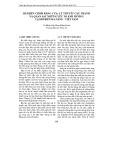
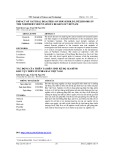
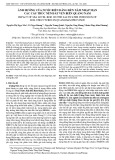
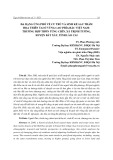
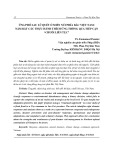


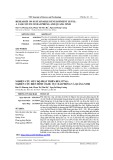
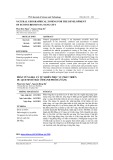

![Tài liệu Vi sinh vật môi trường [Mới nhất]](https://cdn.tailieu.vn/images/document/thumbnail/2025/20251123/ngkimxuyen/135x160/21891763953413.jpg)
![Sổ tay truyền thông Phân loại chất thải rắn sinh hoạt trên địa bàn tỉnh Quảng Nam [Chuẩn nhất]](https://cdn.tailieu.vn/images/document/thumbnail/2025/20251114/kimphuong1001/135x160/1701763094001.jpg)
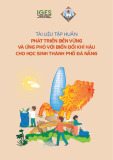

![Quản lý chất thải nguy hại: Sổ tay Môi trường [Chuẩn nhất]](https://cdn.tailieu.vn/images/document/thumbnail/2025/20251029/kimphuong1001/135x160/9011761720170.jpg)









